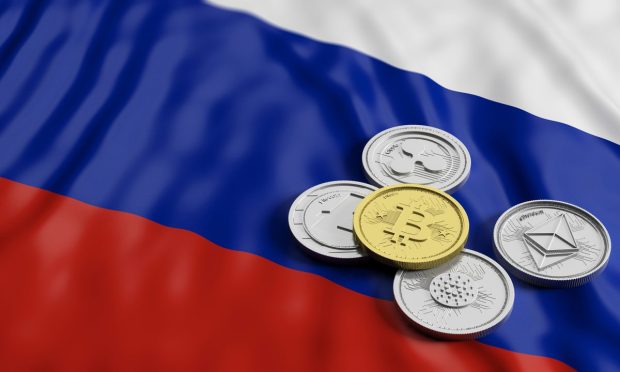Today in Crypto: Crypto Market Cap Drops 9% to $1.5T as Russia Attacks Ukraine

Russia’s invasion of Ukraine sent the market capitalization of major cryptocurrencies plummeting before they regained most of their lost value as the invasion passed the 24-hour mark.Bitcoin traded at $38,998 at 9 a.m. ET on Feb. 23 on the Coinbase exchange. Bitcoin hit its lowest recent level, $34,322, in the early minutes of Feb. 24 as the scope of Russia’s military action became clear. Bitcoin had rebounded to $38,821 as of 11:30 p.m. on Feb. 24.Over the same timeframe: Etherium traded at $2,740 at 8:30 a.m. ET on Feb. 23 on the Coinbase exchange. Bitcoin hit its lowest current level, $2,30, at 12:30 a.m. on Friday (Feb. 25). Etherium had rebounded to $2,628 as of 11:30 p.m. on Feb. 24.Coindesk reported that the market capitalization for all cryptocurrencies lost as much as $1.5 trillion, or half its value, during the first 24 hours after the invasion before recovering somewhat. “The aggravation of tension around Ukraine exerted pressure on risky assets,” Alex Kuptsikevich, a financial analyst at FxPro, reportedly told CoinDesk. “There are growing risks of escalation associated with the introduction of Russian troops into Donbass. In such a situation, risky assets may continue to decline further.”Like counterparts worldwide, European lawmakers are worried about the power consumed by crypto miners, Coindesk reported Thursday. Still, unlike their peers everywhere but China, the Europeans are seriously considering doing something about it. The crypto website reported that a package of proposed regulations called Markets in Crypto Assets, or MiCA, would bar some use of proof-of-work mechanisms to maintain cryptocurrencies. China took such as measure in 2021, and much of the work shifted to Europe and the United States.Some European lawmakers have called for banning cryptocurrencies outright due to their energy demands.In other news, the Russian Federation is considering requiring that cryptocurrency users conduct transactions through exchanges and certified wallets rather than peer-to-peer, Coindesk reported.Coindesk based its report on a bill proposed by Russia’s Ministry of Finance.Coindesk said the document, called “On the Digital Currency” in English, was not formally distributed to the public but was shared with the crypto website by a “legal expert.”Coindesk further reported: “The Ministry of Finance earlier this week said it introduced the bill regulating crypto trading and mining despite the objections of the Bank of Russia, which insists on a full ban on cryptocurrency trading, mining and ownership.”The bill also would require that businesses dealing in cryptocurrencies maintain records similar to those maintained by traditional businesses. The measure would ban offshore companies from serving as crypto-middlemen and ban felons from chairing digital currency organizations, Coindesk reported. That exclusion, according to Coindesk, would encompass many people subjected to laws invoked to persecute political opponents of Russia’s regime.Finally, cryptocurrency purchases from the required registered exchanges would have to be made with funds coming directly from Russian banks.
Also in the world of crypto, the market is proving that financial fear and instability, fueled by concerns such as inflation, are good for stable coins even as they’re brutal for other cryptocurrencies.Bloomberg News reported that even before Russia’s invasion of Ukraine, it was clear “the hottest spot in crypto right now is coins with prices that don’t move.”Stable coins — the largest, by market capitalization, is tether — are pegged to assets such as a specific currency.“To me, what is happening is that the crypto ecosystem is growing into a kind of shadow banking system with its own leverage, its own fractional reserve kind of setup,” said Brent Donnelly, president of Spectra Markets, reportedly told Bloomberg. “Over time, the crypto ecosystem just becomes a separate parallel system and as air comes out of crypto prices, the sellers leave their cash in stablecoins as there’s no real point moving it back and forth to and from fiat.”Russia’s invasion of Ukraine and the turmoil it created has provided a test case of the effect of extreme events on stable coins. Tether, a U.S. dollar-linked stablecoin, is trading at more than $1 on Ukrainian Crypto Exchange Kuna, Coindesk reported.But there’s a hitch: You can only have a buyer if you have a seller. Coindesk quoted Kuna founder Michael Chobanian as having said: “The majority of people have nothing else to choose apart from crypto. We’re talking about millions of dollars of cash that wants to go into crypto…but we can’t find people who are willing to do the opposite, sell it.”Early on Friday, Feb. 25, Eastern Time, Kuna worth $1 cost $1.05.
